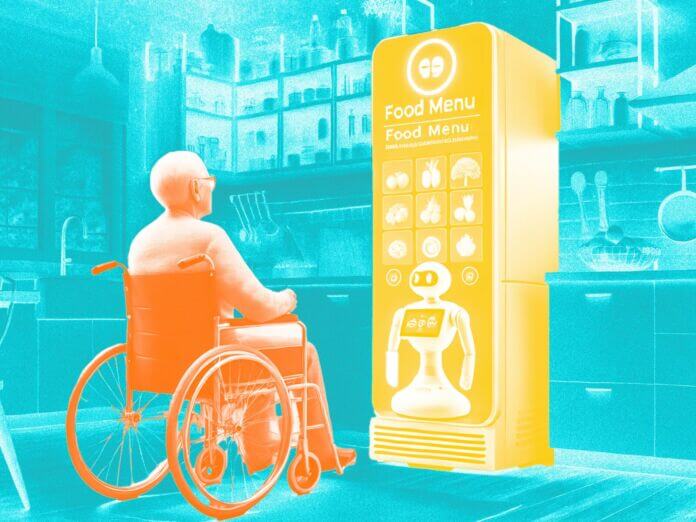
ZARIOT – August 21, 2024
Collected at: https://www.iotforall.com/harnessing-iot-to-improve-elderly-care
As life expectancy increases globally, how we can provide long-term care for aging citizens is a vital issue. Data from the United Nations shows an increasingly aging population, with an accelerating rise in the number of people over 65 since 2010, regardless of a country’s economic status.
Studies highlight challenges as life expectancy rises by nearly eight years, impacting demographics. This has motivated governments around the world to increase investments in IoT for quick-action projects. Aiming to help communities become more livable and meet the needs of their senior and aging residents.
Integrating IoT aims to improve public places, transportation, housing, and more. We outline key areas where IoT solutions have and will continue to positively influence elderly care.
IoT for Elderly Care
Increase Overall Convenience
There are numerous ways smart, connected IoT devices can make life easier for people, especially seniors. For instance, buying groceries can be as simple as using a smartphone or fridge. Integration of these two interfaces means automating the purchasing process when inventory is running low.
Speaking of connected interfaces, by 2025, drivers 65 and older will represent 25 percent of the driving population, compared with 15 percent in 2001. In this case, connected cars save addresses, assist navigation during the journey, and can alert relevant authorities in the event of an emergency.
Fully autonomous cars may become a reality sooner than you think with companies such as Telsa, Ford, BMW, and Volvo that already have prototypes underway. Leveraging IoT in the automotive space is also lifesaving, considering drivers 65 and older are 16 percent more likely to cause an accident than drivers of other age groups.
Alleviate Mobility Issues
Common mobility issues cause some discomfort and loss of autonomy during the golden years. Unfortunately, these issues are also unavoidable. Two-thirds of Americans over age 65 require assistance with daily living activities which causes many seniors to feel a loss of independence.
These lifestyle changes also make them more prone to depression due to social isolation. IoT and connected devices make self-sufficiency and independence possible for even those with advanced mobility issues.
Install smart HVAC systems and meters to reduce walking for those with mobility issues. Smart lighting systems with sensors illuminate paths in the dark, then switch off to conserve energy.
Enhance Safety
IoT devices can certainly help enhance safety for elderly care. Motion sensors alert emergency services or caregivers if no movement is detected over a long period. Ensuring help will arrive faster after a fall or illness.
Accelerometers, sound, and vibration sensors can automatically detect falls and send alerts with voice activation if something goes wrong. Sensors can also track changes in air quality, notifying the homeowner or caregiver if levels exceed an acceptable level.
For example, senior citizens are particularly vulnerable to carbon monoxide poisoning, to the extent that certain cities have made it mandatory to install carbon monoxide alarms in care homes and facilities to prevent accidents from happening.
General home security is also improved with smart locks, cameras, and sensors to alert homeowners of any unusual activity. They can also help seniors monitor their homes independently, without just relying on a third party.
Better Healthcare
Globally, as healthcare resources are spread thinner and thinner, IoT can once again alleviate these issues. IoT devices can monitor everything from medication compliance to blood pressure.
Smart pillboxes help make sure medication is taken as prescribed, or a diabetic patient could monitor their glucose levels and automatically log them online.
Senior healthcare facilities can monitor recovering patients by installing a smart pad in their beds. Alerting caregivers when unusual patterns are detected or when and need help getting up. Again, these devices may help seniors live with more independence and peace of mind without putting more strain on healthcare workers.
Data from these devices can also be shared with caregivers, doctors, or even family members for improved care and overall health of the user.
IoT’s Potential for Elderly Care
While IoT adoption may seem like a challenge, it is not as significant as you might think. According to studies by the Pew Research Center, 92 percent of seniors aged 65 and older in the U.S. own a mobile phone, and of those, 61 percent are smartphones. 45 percent of seniors under the age of 75 even use social networking sites.
IoT holds so much potential for elderly care and can help alleviate some of the issues faced by an aging population. Used well, it can enhance independence, longevity, and well-being, for our seniors, while simultaneously easing the stress on those that love them.

Leave a Reply